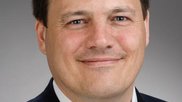| Editor's Choice: Leadership | Radiology department employees are expected to report safety concerns, ensuring that their patients are cared for in the safest environment possible. However, according to a new study published in Radiology, employees don’t always report such issues. Radiology department employees are expected to report safety concerns, ensuring that their patients are cared for in the safest environment possible. However, according to a new study published in Radiology, employees don’t always report such issues. | | |
| Millennials growing up in an evolving world of digital connection might be drawn to the high-tech nature of radiology, but those same prospective physicians should be wary of their bedside manner, according to one Arizona clinician. Millennials growing up in an evolving world of digital connection might be drawn to the high-tech nature of radiology, but those same prospective physicians should be wary of their bedside manner, according to one Arizona clinician. | | |
| Big changes are everywhere in today’s business world, according to a new study published in the Journal of the American College of Radiology. So what, exactly, does this mean for radiology? Big changes are everywhere in today’s business world, according to a new study published in the Journal of the American College of Radiology. So what, exactly, does this mean for radiology? | | |
| Philip Costello, MD, officially became the 118th president of the American Roentgen Ray Society (ARRS) at this week’s ARRS 2018 Annual Meeting in Washington, D.C. Philip Costello, MD, officially became the 118th president of the American Roentgen Ray Society (ARRS) at this week’s ARRS 2018 Annual Meeting in Washington, D.C. | | |
| It may not be the most popular career path for radiology newcomers, but offering residents the option of a clinician-educator track (CET) could help to solidify the future of radiology education, a team out of Emory University School of Medicine in Atlanta wrote in Academic Radiology this month. It may not be the most popular career path for radiology newcomers, but offering residents the option of a clinician-educator track (CET) could help to solidify the future of radiology education, a team out of Emory University School of Medicine in Atlanta wrote in Academic Radiology this month. | | |
| Radiology has been lagging behind other healthcare specialties for quite some time when it comes to gender equality. Could the creation of groups for women in radiology (WIR) be a step in the right direction? Radiology has been lagging behind other healthcare specialties for quite some time when it comes to gender equality. Could the creation of groups for women in radiology (WIR) be a step in the right direction? | | |
| The American College of Radiology (ACR) announced Wednesday, May 9, that Geraldine McGinty, MD, MBA, is this year’s recipient of the William T. Thorwarth Jr., MD, Award. The American College of Radiology (ACR) announced Wednesday, May 9, that Geraldine McGinty, MD, MBA, is this year’s recipient of the William T. Thorwarth Jr., MD, Award. | | |
| Suhny Abbara, MD, a professor of radiology at UT Southwestern Medical Center in Dallas, has been named the editor of RSNA’s new online journal, Radiology: Cardiothoracic Imaging. Suhny Abbara, MD, a professor of radiology at UT Southwestern Medical Center in Dallas, has been named the editor of RSNA’s new online journal, Radiology: Cardiothoracic Imaging. | | |
| The Institute of Medicine’s 2015 report Improving Diagnosis in Health Care revealed the persistence of diagnostic errors in all settings of healthcare that continued to harm an unacceptable number of patients. Numerous factors contribute to hindering the diagnostic process, such as workflow limitations, poor implementation of technology, the medical liability system, current reimbursement models and organizational culture. Nonetheless, the authors conclude that improving the diagnostic process is “not only possible, but also represents a moral, professional and public health imperative.” The Institute of Medicine’s 2015 report Improving Diagnosis in Health Care revealed the persistence of diagnostic errors in all settings of healthcare that continued to harm an unacceptable number of patients. Numerous factors contribute to hindering the diagnostic process, such as workflow limitations, poor implementation of technology, the medical liability system, current reimbursement models and organizational culture. Nonetheless, the authors conclude that improving the diagnostic process is “not only possible, but also represents a moral, professional and public health imperative.” | | |
| |
|
| ![]() | |
|












